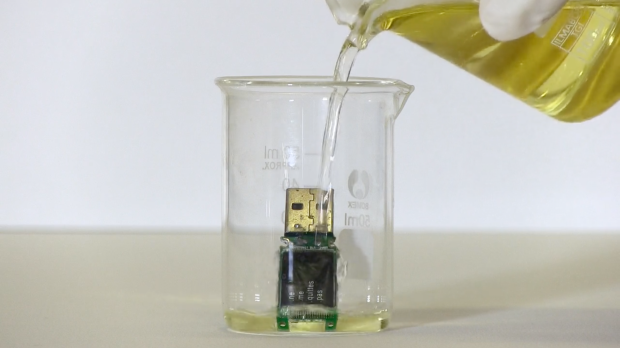(artifact analysis, mini assignment 4.1)
The art project “ne.me.quittes.pas” made by Audrey Samson and Jonathan Kemp in 2014 is—in Samson’s own words—a “digital data funeral” (Samson, 2015, p. 6). It plays on issues around erasure of things that are usually not so easy to erase digitally—selfies, browser histories and such. In the promo video for the project it says wishfully “if only it could melt away” (video link). Nevertheless, the name of the work carries a reference to the song “Ne me quitte pas” (1959) by Jacques Brel. The song is about the relationship between a man and a woman, and the man is sad that the woman (his mistress) has left him. But two things about this reference is bugging me. First, why did Samson add an ‘s’ after ‘quitte’? In some versions of the title of the work, it is called “ne.me.quitte(s).pas” with a parenthesis around the extra ‘s’, but usually the extra ‘s’ is just there with no further explanation. (I am not going to go further into this in my analysis). Second, when we think of the relationship between the human and its data, we logically think that the human is the one who would wants to “melt away” its data files. But isn’t that the opposite of Brel’s song, since the subject of the song is sad of being left and doesn’t want the woman to “melt away”? Maybe Samson uses the reference ironically, as in: “Please leave me, dear data”. But if she doesn’t, what does it mean for the relationship between human and data?
In the Digital Culture class06 where we discussed this text, a question was raised about where our sympathy was—was it with the man who is being left, or the woman, who has left the man because he wasn’t man enough to be there for her when she got pregnant with their kid. Some people in class said that they had more sympathy with the woman than the man in this case. I would still argue, though, that we understand the story from the crying man’s point of view, and since he is admitting how cowardly he has behaved, I have my sympathy with him. After all it was the woman’s own choice to leave him and afterwards get an abortion to solve the problem about the pregnancy. My question is now: How is the relation between the human and the data in “ne.me.quittes.pas” the same as the relation between man and woman in “Ne me quitte pas”? And then: Who is the man and who is the woman; Who doesn’t want to be left by whom? Who admits his/her cowardice? To answer this, we must have a closer look at Samson’s project. There is a row of actions that the part taker has to do as part of the art project, and they are explained by Samson like this:
1. Take a USB key home with you.
2. Think about what data you would like to ritually erase.
3. Transfer the data to the USB key (delete original).
4. Send the USB key in the pre-addressed envelope and remember to include your return address.
5. You will receive your data remains in the post.

As we can see, the human has to actively do a lot of things to get its data erased. In Brel’s song the one who takes action is the woman, who decides to leave the man. Since it apparently is the human itself who decides to get its data erased, it seems like the data is the crying one in the art project, and not the human. No matter if the human chooses to erase nudes or school notes that he/she wanted to burn anyway, the only one in Samson’s project who says that he/she/it doesn’t want to be left is the data itself. Say that the human would put its most important files such as wedding photos or insurance papers on the USB to erase these really important files, that we wouldn’t expect the human to want to be left from. *Then* the human would be crying to the data: “don’t leave me!” But since the human is on purpose erasing its data with its own will, I would argue that the data is the sad one of losing its human. In addition to that, the USB key that you get in the project has these words written on it: “ne.me.quittes.pas” (see still photo above, where the words are being drowned beacuse the human decided to get it drowned in chemicals). This can be seen as a final yell from the data to the human: “don’t leave me, human!”, as the human glimpses at the intact USB key one last time before dropping it into the envelope. Like the woman chooses to leaves the man, the human just coldly puts its data on the USB, into the envelope, sends it away and gets it drowned and erased. In that way, one could argue that Samson actually uses the reference to Brel, to give a voice to our data and tell us that we should try and see the case from more perspectives and start sympathizing with the data that we wish to erase.
Reference: Audrey Samson, “Erasure, an attempt to surpass datafication”, APRJA (4)1, 2015.
